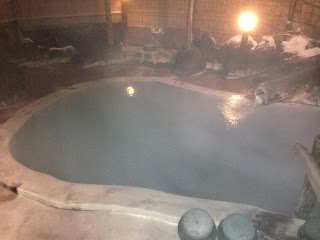Five and a half years after East Japan
Great Earthquake and its consequent severe accident, First Fukushima Nuclear
Power Plant still keeps on leaking radioactively contaminated water to Pacific
Ocean. The owner of the plant, Tokyo Electric Power Company, has been trying to
shut it down by freezing the soil around the plant, which has not been working
at all. Can Japanese Prime Minister Shinzo Abe implement his words in
invitation of Tokyo Olympic 2020 that declared contaminated water was
completely under control?
TEPCO and Japanese government introduced an
idea of building wall with frozen soil underground, that would surround the
broken and highly radiated plant, to block underground water going through the
site. It sank 1,568 freezing bars with 30 meters long and circulated freezing
liquid with -30 degree Celsius around the plant. The government of Japan
contributed ¥34.5 billion for building frozen wall from national budget against
criticism on pouring tax money into compensation for the failure of a private
company.
Although TEPCO started freezing the wall in
March, it did not work, because the flow of underground water was too fast to
freeze the soil around the site. Heavy rains with consecutive storms melted a
part of the wall, which caused skepticism on fundamental concept of freezing
soil. “The explanation of TEPCO on viability of frozen wall does not make
sense,” said a member of Nuclear Regulation Authority.
To enhance effect of freezing, TEPCO
introduced a new measure that injected cement into the place not being frozen.
While TEPCO supposes the wall to be working as a curtain blocking water, effect
of frozen wall still is limited as something like opened blind. While TEPCO and
Japanese government expect the wall to be working and finalizing treatment of
contaminated water in the site, no positive sign for achievement has been seen.
Not only underground water flowing into the
site, but purification effort of contaminated water also matters. TEPCO has
been scooping radioactively contaminated water from the broken facility and
purifying it through the system called Advanced Liquid Processing System, or
ALPS. But, ALPS cannot remove tritium, while it can do other 62 kinds of
radioactive materials. Although International Atomic Energy Agency or Nuclear
Regulation Authority recommend TEPCO to release the water with tritium into the
sea, it would take seven or more years to release all the water stocked in the
backyard of the plant. Fishermen around there oppose the option of releasing,
anyway.

No comments:
Post a Comment